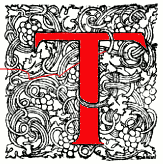
he exponential growth in the total output of printed matter, from 1770 onward, was the beginning of a “long revolution” in media, extending throughout the following century. Whether they locate the causes in legal decisions that deregulated the reprint market, increased literacy creating higher demand, technological innovation enabling greater supply, or some other factor, book historians often make their accounts of print culture and the print trade hinge on the year 1800. Broadly speaking, people after 1800 experienced print culture differently—and often more selfconsciously—than their parents or grandparents had, and the pace of change accelerated as the century went on.
Technological innovations changed book production. The steam press — first introduced in 1814 but initially used primarily for printing newspapers— was used increasingly for printing books. Stereotypy made it possible to reprint books more easily as demand required, eliminated the need to reset type for new editions, and so reduced the financial risks of publication. The shift from paper made of cotton or linen rags to paper made of wood pulp reduced costs, as did the elimination in 1861 of taxes on paper. Wove paper increasingly took the place of laid paper. Technologies of image reproduction also changed. Steel-plate etching allowed for more copies of an image to be printed without deterioration, compared to copper plates; its adoption played a role in the commercial success of giftbooks and annuals from the 1830s. Wood engraving increased the number and quality of printed images in circulation, especially when combined with electrotype; it was used both in books and in newspapers such as Punch and the Illustrated London News. Lithography made it possible to print images and text on the same page cheaply and in large print runs, while chromolithography allowed printers to include color more easily.54 Photographically illustrated books, from the 1840s onward, introduced an entirely new technology, while the halftone process, patented in England in 1882 and widely used from the 1890s, allowed photographs to be printed in books and newspapers. The printed matter produced by these new technologies circulated along radically improved distribution networks of roads, canals, and railways. As a result, the books that were being offered for sale in the 1860s looked different in many respects to books printed in the 1790s. [17]
Related material
- “Bite-sized chunks of culture”: How Anthologies reshaped Victorian ideas of Romantic poetry
- Victorian Illustrated Books as Essentially Victorian
Bibliography
Bindman, David. “Prints,” in An Oxford Companion to the Romantic Age: British Culture 1776-1832. Ed. Iain McCalman. Oxford: Oxford University Press, 1999, 207-13.
Dane, Joseph A. ‘“Ca. 1800’: What’s in a Date?” in Blind Impressions: Methods and Mythologies in Book History. Philadelphia: University of Pennsylvania Press, 2013), 37-57
Erickson, Lee. The Economy of Literary Form: English Literature and the Industrialization of Publishing, 1800-1850. Baltimore: Johns Hopkins University Press, 1996.
Hills, Richard L. Papermaking in Britain, 1488-1988: A Short History. London: Athlone Press, 1988,
Hunnisett, Basil. Engraved on Steel: The History of Picture Production Using Steel Plates. Aldershot: Ashgate, 1998).
Mole, Tom. What the Victorians Made of Romanticism: Material Artifacts, Cultural Practices, and Reception History. Princeton: Princeton University press, 2018. [Reviewed by George P. Landow]
Moran, James. The Printing Press: History and Development from the Fifteenth Century to Modern Times. Berkeley: University of California Press, 1973.
Twyman, Michael. The British Library Guide to Printing: History and Techniques. London: British Library, 1998), 38-46 and 69-75.
“Stereotype” in Geoffrey Ashall Glaister, Glossary of the Book. London: George Allen and Unwin, 1960, 387-91.
Lister, Raymond. Prints and Printmaking: A Dictionary and Handbook of the Art in Nineteenth-Century Britain. London: Methuen, 1984.
Last modified 29 August 2018